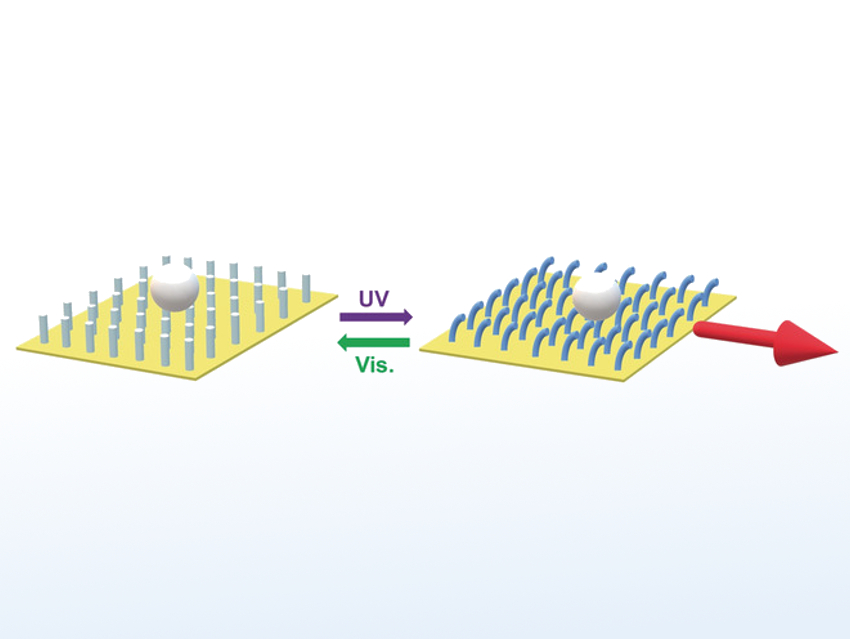Light-driven movement, or photoactuation, requires no direct contact. The crystals of photochromic diarylethenes (pictured below), for example, demonstrate photomechanical behavior. However, the cooperative bending of such crystals had not been reported so far.
Ryo Nishimura, Kingo Uchida, Ryukoku University, Otsu, Japan, and colleagues have designed an object-transportation system made from vertically arranged diarylethene crystals (pictured above). When irradiated with UV light, the dimensions of the crystallographic unit cell of diarylethene change as some molecules undergo photocyclization. As a consequence of these changes, the crystals bend away from the incident UV light. The crystals revert to their original position upon illumination with visible light.

To create a surface filled with standing crystals, the researchers deposited a gold–palladium alloy on a glass substrate with submicron-sized bumps. The diarylethene is then deposited by sublimation. Needle-shaped crystals grow on each bump and form an array of vertically aligned crystals.
A polystyrene bead placed on the crystals (pictured in white) can be moved with UV light and reverts to its original position upon irradiation with visible light. The team believes the system could be used for remote-controlled object transportation and for the development of soft robots.
- Object Transportation System Mimicking the Cilia of Paramecium aurelia Making Use of the Light-Controllable Crystal Bending Behavior of a Photochromic Diarylethene,
Ryo Nishimura, Ayako Fujimoto, Nobuhiro Yasuda, Masakazu Morimoto, Tatsuhiro Nagasaka, Hikaru Sotome, Syoji Ito, Hiroshi Miyasaka, Satoshi Yokojima, Shinichiro Nakamura, Ben L. Feringa, Kingo Uchida,
Angew. Chem. Int. Ed. 2019, 58, 13308–13312.
https://doi.org/10.1002/anie.201907574




